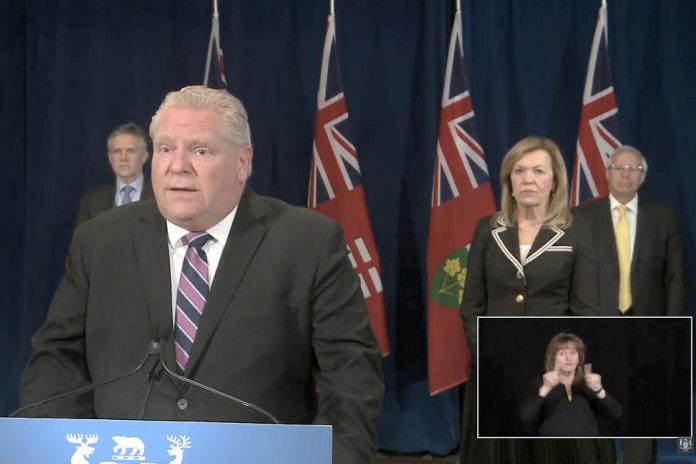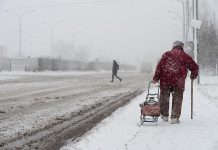
On Monday (April 27), Ontario Premier Doug Ford unveiled the government’s framework for eventually reopening the province’s economy after the shutdown caused by the COVID-19 pandemic.
Ford was joined at the announcement by Health Minister Christine Elliott, Minister of Finance Rod Phillips, and Minister of Economic Development, Job Creation and Trade Vic Fedeli.
“Our government has developed a framework for reopening Ontario’s economy,” Ford said. “This framework is a roadmap. It will guide our collective decision making. It lays out the threshold we need to hit, the targets we need to work towards.”
Reopening will be gradual and occur in three stages, with no set timeframes for the stages. There will be two-to-four weeks between the launch of each stage to allow health officials to assess conditions before moving to the next one. This will determine if measures should be adjusted, loosened or tightened.
“The framework is about how we are reopening, not when we are reopening,” Ford added. “Let me be crystal clear: as long as this virus remains a threat to Ontario, we will continue to take every precaution necessary. We will continue to act based on the best advice available to us.”
“No-one wants the economy to open up more than I do, but we can’t take anything for granted. We can’t take unnecessary risks because, we’ve seen around the world, all it takes is one person. If precautions are not taken, one person infected with this virus can spread it to hundreds of others.”
Here are three stages:
- The first stage would include opening select workplaces that can meet current public health guidelines, allowing essential gatherings of a limited number of people, and opening some outdoor spaces.
- The second stage would include opening more workplaces with significant mitigation plans, opening more public spaces, and allowing some larger public gatherings.
- The third and final stage would include opening all workplaces responsibly and relaxing restrictions on public gatherings.
During all three stages, there would be continued protections for vulnerable populations.
When making decisions for each stage, the Ontario government will consider factors such as the risk of the spread of COVID-19 and the ability to implement protective and preventative measures in the workplace.
Ontario’s Chief Medical Officer of Health and health experts will advise the government on when it may begin to ease public health measures using a range of criteria, including:
- a consistent two-to-four week decrease in the number of new daily COVID-19 cases
- sufficient acute and critical care capacity, including access to ventilators and ongoing availability of personal protective equipment
- approximately 90% of new COVID-19 contacts are being reached by local public health officials within one day, with guidance and direction to contain community spread
- ongoing testing of suspected COVID-19 cases, especially of vulnerable populations, to detect new outbreaks quickly
The government also announced the Ontario Jobs and Recovery Committee to support Ontario’s recovery efforts by consulting Ontarians and developing a plan to stimulate economic growth and job creation, while maintaining the health and safety of the people of Ontario.
The committee includes:
- Rod Phillips, Chair, Minister of Finance
- Vic Fedeli, Vice Chair, Minister of Economic Development, Job Creation and Trade
- Peter Bethlenfalvy, President of the Treasury Board
- Caroline Mulroney, Minister of Transportation
- Christine Elliott, Deputy Premier and Minister of Health
- Ernie Hardeman, Minister of Agriculture, Food and Rural Affairs
- Greg Rickford, Minister of Energy, Northern Development and Mines and Minister of Indigenous Affairs
- John Yakabuski, Minister of Natural Resources and Forestry
- Laurie Scott, Minister of Infrastructure
- Lisa MacLeod, Minister of Heritage, Sport, Tourism and Culture Industries
- Lisa Thompson, Minister of Government and Consumer Services
- Monte McNaughton, Minister of Labour, Training and Skills Development
- Prabmeet Sarkaria, Associate Minister of Small Business and Red Tape Reduction
The committee, along with MPPs, will be meeting with people and businesses across all sectors impacted by the COVID-19 outbreak.
Ontario first declared a state of emergency on March 17th and ordered the closure of businesses it deemed non-essential. On April 14th, the province extended the state of emergency until May 12th.
For more information about the framework, visit ontario.ca/page/reopening-ontario-after-covid-19.


























